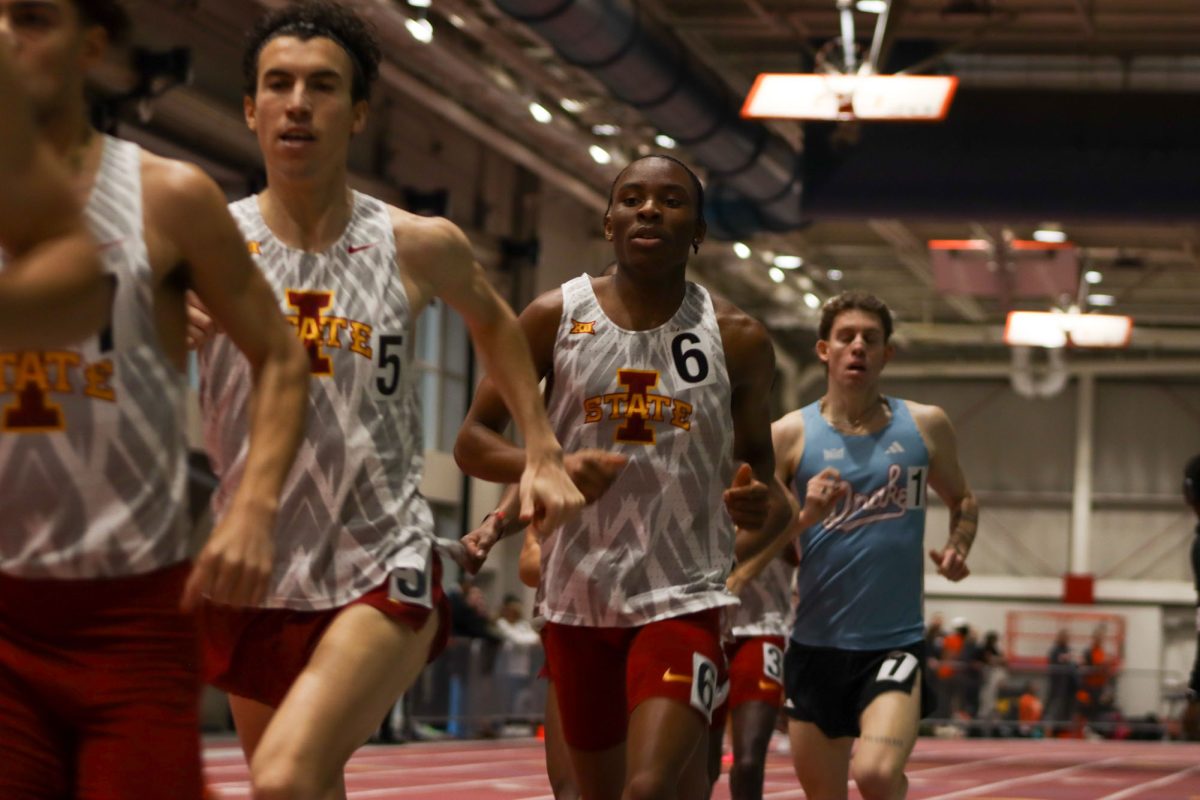Professors dreaming of multicultural education
January 27, 1997
The rhythm of four drums sets the beat for an African celebration dance performed by about 25 students and instructors Saturday morning.
As the adults danced around the circle of children, their movements took meaning when their arms and legs motioned the signs of giving praise to the sun and the rain. Their motions represented the birth of a child, a celebration of life.
This African dance is only one of many multicultural activities students learn at the Kuumba Multicultural School of the Arts.
However, “Kuumba,” which means creativity in Swahili, is not a concrete place with walls.
Its classes are held in the Physical Education Building on the Iowa State campus.
School officials said permanent walls are in the works. They would like to construct an independent elementary school. The school could become the first ongoing multicultural school in the nation, two Iowa State education professors said.
A longitudinal study
Kuumba was a branch of the Ames Few Dance and Theatre Production Company founded in 1995. Financial woes have caused the company to fold, but its educational component, Kuumba, has been spared.
The school offers instruction in the arts each Saturday from an African-centered focus. Those ages 3 and older can take courses.
Karen B. Donaldson and Carlie Tartakov, both assistant professors in curriculum and instruction at ISU, have been researching the benefits of Kuumba becoming an ongoing multicultural elementary school.
The most important reason for pursuing Kuumba as an ongoing school, Tartakov said, is to research the impact it would have on students as a result of placing more emphasis on multicultural goals in educational curriculum.
“What this will be is a longitudinal study to see how students benefit,” Donaldson said. “We realized all children need to be multiculturally literate in this world. So we have a need to expand the cultural framework,” Tartakov said.
One of Kuumba’s objectives, she said, is to enroll a higher percentage of students from different backgrounds.
“Multiculturalism doesn’t just mean having students from different ethnicities,” Donaldson said. “The term [‘multicultural’] doesn’t just represent minorities. It also represents women, the disabled and persons of different sexual orientations.”
Grass-roots movement
The concept of a multicultural education isn’t new. It started during the 1960s civil rights movement.
“It was a grass-roots movement that wanted a racist-free environment,” Donaldson said. “[It] wanted to see kids reflected in the curriculum.”
Multicultural education is still most after called a “reform movement.”
“It is necessary to transform education in all schools to represent many voices that are silenced and make contributions in society,” Donaldson said. “Multiculturalism is an academic discipline.”
Donaldson has done research in anti-racist education. Over the last two years, she conducted an anti-racist education study which surveyed 500 elementary teachers in the West, Northeast, South and Midwest.
Seventy percent of teachers said racism does exist, but they didn’t see it in an institutional setting.
“As a result,” Donaldson said, “we want to shed light on the nation by having an anti-racial, multicultural curriculum.”
Preliminary research
Alternative schools are springing up all over the country, but Donaldson said she has not found one that is extensively multicultural in its student body and instruction.
One school Donaldson and Tartakov are studying as part of their preliminary research is the Che-Lumumba School in Amherst, Mass., which was founded in 1967. It is no longer operating.
Tartakov, who has been interviewing the school’s former students, said Che-Lumumba grew into an ongoing elementary school out of a Saturday school format, like Kuumba.
The preliminary research shows the school’s students benefited from individual attention and parental involvement. Students also learned to appreciate and respect their diverse student body in a predominantly white community, gained a higher self-esteem, and learned to carry out school theories into decision-making processes, Tartakov said.
Multiculturalism in Iowa
Maurizio Visani, a graduate student in curriculum and instructional technology, has taught and taken classes at Kuumba.
He said he likes the direction of a multicultural perspective and its holistic approach to teaching students about multiculturalism, which, he said, isn’t readily available at other schools.
“I would like to see a lot more people participate in it,” he said. “I would like to see more participation from students at ISU.”
The prospect of a multicultural school in Iowa, where the population is more than 90 percent white, is ironic, Donaldson said. But Iowa does have a multicultural, nonsexist mandate included in education legislation.
“It doesn’t matter where we create this model,” she said.
“In terms of literature, we have yet to see a multicultural school produced.
“My dream is to see multicultural education applied in regular education. But as I’ve worked with schools, multiculturalism came in spurts.”
“It will be a great day when all curriculums and programs in the nation are truly multicultural and maybe our research will help in that process,” Tartakov added.
Kuumba has “moral support” from the university, Donaldson said with optimism.
It has yet to receive certification from the state.






